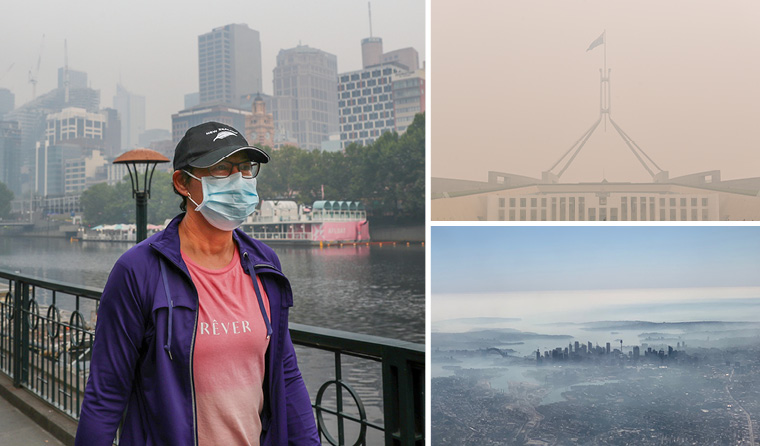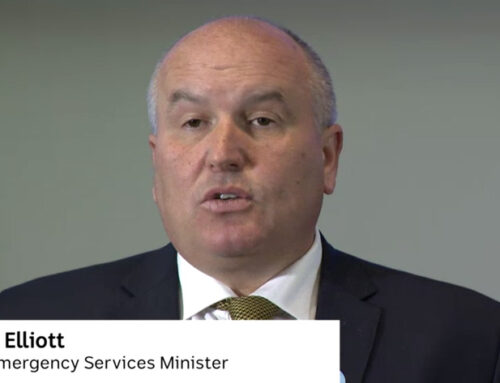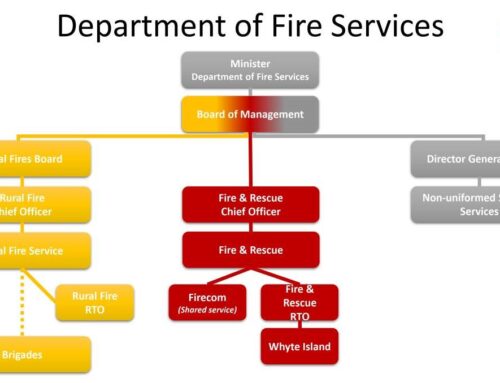
Melbourne, Sydney and Canberra all experienced compromised air quality through the bushfires.
Researchers believe an independent expert committee would give evidence-based, accurate and consistent advice on bushfire smoke and air pollution.
The calls in a Medical Journal of Australia article come after major cities like Sydney, Canberra and Melbourne endured long periods of the worst air quality in the world caused by this summer’s bushfire smoke.
‘It is time for an independent national expert committee on air pollution and health protection to be established to support environmental health decision-making in Australia,’ the Australian National University researchers write.
‘Existing health protection advice … mainly focuses on shorter and more localised smoke episodes.
‘It is important that health professionals and patients, as well as healthy individuals and those at higher risk, develop a good understanding of the available health protection measures and their effectiveness and potential trade-offs.’
The researchers note the advice for short-term smoke exposure, such as staying indoors with windows closed and reducing strenuous activity, becomes impractical during the months of smoke over summer.
The researchers call for better air quality monitoring to enable location-specific ratings of PM2.5 levels published close to real time. That, they argue, would allow people to base their activities on the current local air quality.
‘We strongly recommend that all Australian jurisdictions present actual hourly PM2.5 data rather than an index,’ they write. ‘Real time, hourly averaged PM2.5 concentrations are the most appropriate metric to guide personal behaviour that minimises exposure to bushfire smoke.
‘More nuanced advice would encourage individuals to be guided by location-specific air quality forecasts and the pattern of hourly PM2.5 concentrations at nearby air quality monitoring locations, and to plan their daily activities in ways that minimise exposure to pollution.
‘Advice to stay indoors may be ineffective over longer periods. Older houses in Australia are often quite “leaky”, allowing bushfire smoke to penetrate indoors over time and creating unhealthy indoor air quality conditions.
‘Well sealed and air conditioned indoor environments (typically, modern apartments and offices, libraries and shopping centres) can provide respite from smoke pollution, particularly if effective air filtration systems are in place.’
More research into the long-term effects of smoke pollution is needed, as are climate mitigation strategies to tackle a key underlying cause of increased bushfire risk, the researchers argue.
Lead author and Professor of Global Environmental Health Sotiris Vardoulakis told newsGP the article makes a strong case for national policy.
‘Information was presented inconsistently across jurisdictions. We are advocating for consistent health messaging and a national strategy for bushfire smoke and air pollution,’ he said.
Professor Vardoulakis said the unprecedented fires posed challenges for researchers, because there are no parallel experiences with long-term bushfire smoke.
‘This situation was unique because we had bushfires over longer periods of time with PM2.5 pollution much higher than in the past. We’re in uncharted territory,’ he said.
‘There is very limited evidence for this type of exposure over long periods of time. It’s difficult to say there won’t be health effects eventually.’
Professor Vardoulakis and his colleagues note that a major public health concern is population exposure to PM2.5 particles able to ‘penetrate deep into the respiratory system, inducing oxidative stress and inflammation, and even translocate into the bloodstream’.
‘Mortality rates have been found to increase in Sydney on days with high bushfire smoke pollution,’ they write. ‘Hospital admissions, emergency department attendances, ambulance call-outs and GP consultations, particularly for respiratory conditions, all increase during periods of severe PM2.5 from bushfires.’
If Australia suffers from consecutive summers of intense bushfire smoke under worsening climate change conditions, Professor Vardoulakis said, health outcomes are likely to be much worse.
During the worst of the smoke, Professor Vardoulakis and his colleagues put out widely shared fact sheets about ways to reduce exposure, and stressed the importance of action for at-risk groups such as people with lung and heart disease, young children, pregnant women and older people
‘We realised there was limited information for sensitive groups. Most bushfire smoke advice was for the general public,’ he said. ‘There was a level of anxiety, especially from pregnant women or parents of young children.’
While much research has been done regarding urban air pollution caused by industry and the burning of fossil fuels in cars, bushfire smoke is less studied.
‘There is some concern that children are more exposed more than adults. They play outside, breathe more air per bodyweight, and their lungs are growing,’ Professor Vardoulakis said. ‘There is evidence that children exposed to high levels of urban pollution over years have compromised lung growth.’
https://www1.racgp.org.au/newsgp/clinical/calla-for-national-action-on-bushfire-smoke-health
Doug Hendrie





